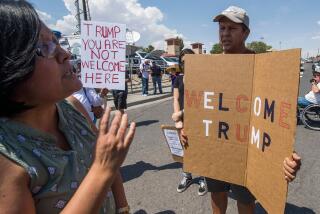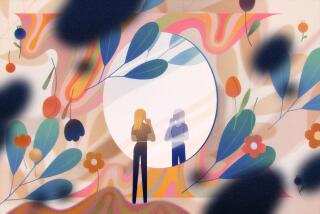Interaction Key to Battling Biases
- Share via
“For that I never knew you, I only learned to dread you,
for that I never touched you, they told me you are filth,
they showed me by every action to despise your kind;
for that I saw my people making war on you I could not tell you apart, one from another.”
--From “St. Roach,”
by Muriel Ruckeyser
When addressing issues of youth and diversity, the challenge frequently lies in being exposed to people who are different from ourselves and taking the opportunity to get to know them as individuals.
In this way we can succeed in escaping from the trap that confines us to the stereotypes perpetuated by our social structure--our family, friends, community and the larger society.
Youths, as well as adults, can become paralyzed by the fear of the unknown. Whether in a schoolyard or on a street corner, interacting with someone different from ourselves often evokes those well-developed biases. Then the barriers go up on both sides in response to these preconceptions. And this is unfortunate because until we get to know the qualities of the other as a person, our scope of experience is needlessly limited--the consequences of preconceptions.
When we yield to these preconceived notions of how we expect others will behave, our tendency is to seek confirming evidence.
“I knew he would do that,” we hear ourselves saying. “See, they are all the same.”
One can usually find evidence to confirm even the most irrational biases. To avoid falling prey to these self-imposed restrictions, the strategy is to look for evidence that proves us wrong.
When coordinating a youth-at-risk program in the Conejo Valley, for example, one of my greatest rewards came at a meeting of the students following a kayak trip. Many of those with us had been on probation. Many associated with gangs. One young man (we will call him George) told us that a couple of weeks after the trip he was at The Oaks shopping center with some of his buddies. He saw one of his new friends from the kayaking trip and greeted him like an old friend.
One of his fellow gang members questioned him, “How can you talk to him? He is part of that other gang.”
George replied, “He is a good guy. We went kayaking together.”
George’s perception that all members of that other gang are bad was now being shattered. He had taken the opportunity to go beyond the labels, to get to know this other person and welcome him into his sphere. We need to challenge our young people by creating opportunities for them to dialogue and have fun with others who are different than them.
“Today I touched one of you for the first time. You were startled, you ran, you fled away.
Fast as a dancer, light, strange and lovely to the touch. I reach, I touch, I begin to know you.”
--Muriel Ruckeyser


